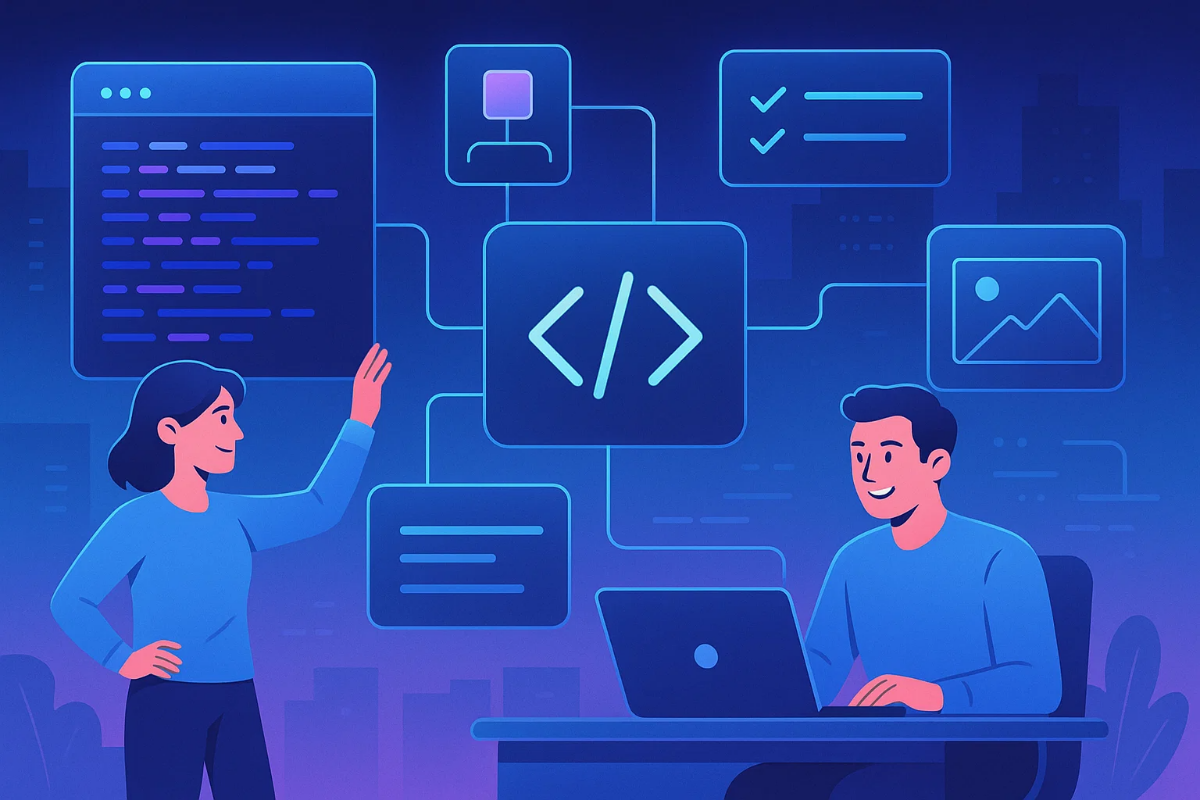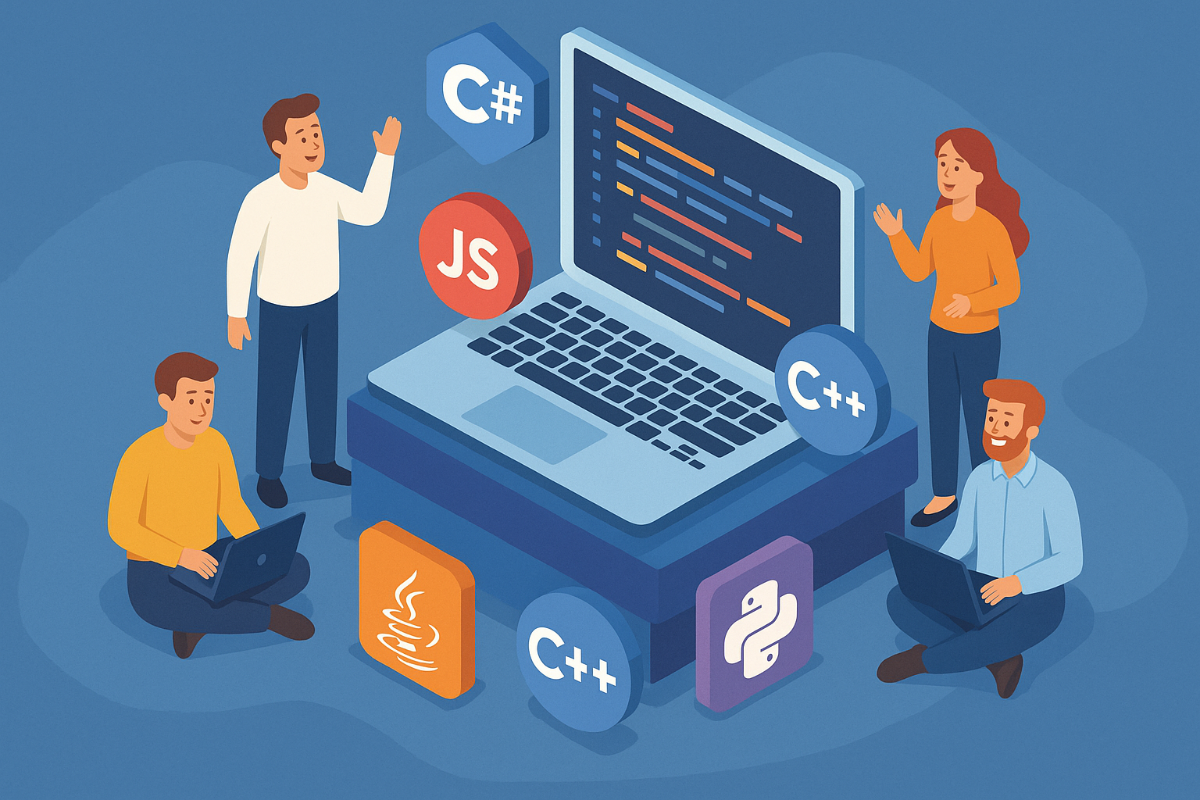Introduction
Game software development is the process of designing, building, and optimizing digital experiences that engage players through interaction, storytelling, and technology. Whether developing small indie titles or AAA productions, modern studios must combine creativity, engineering excellence, and deep user understanding. In this guide, we explore the full spectrum of game creation—mechanics, engines, prototyping, UX, optimization, monetization, and more—so you can craft immersive and engaging digital experiences that stand out in today’s competitive marketplace.

Understanding the Foundations of Game Software Development
Game development merges art, programming, psychology, and business. Successful studios such as Nintendo, Ubisoft, and Epic Games rely on well-structured workflows and specialized teams to create polished interactive worlds.
Why the Foundations Matter
A strong foundation ensures:
-
Clear creative direction
-
Balanced gameplay loops
-
Scalable architecture
-
Maintainable code
-
Efficient pipelines
Without these fundamentals, even visually impressive games fail to retain players.
Core Components of Immersive Game Development
Modern game design includes several interconnected layers. Each one contributes to how immersive and engaging the final digital experience becomes.
Game Mechanics and Core Loops
Game mechanics define how players interact with the world. The core loop—the repeating sequence of actions players perform—determines long-term engagement.
Strong loops usually include:
-
Action – what the player does
-
Reward – what they gain
-
Progression – how they advance
Examples of strong core loops:
-
Resource collection and crafting (e.g., Minecraft)
-
Fast combat with leveling progression (e.g., Dark Souls)
-
Puzzle solving with new mechanics introduced over time (e.g., Portal)
Narrative and World-Building
Storytelling shapes immersion. Even games with minimal dialogue rely on environmental storytelling.
Effective narrative design includes:
-
A clear theme
-
Relatable motivations
-
Emotional arcs
-
World-building consistency
-
Strong character development
Universities such as Harvard and NYU Tisch teach narrative design methodologies applied in top studios.
Choosing the Right Game Engine
Your game engine impacts visuals, performance, workflow, and monetization.
Popular Engines and Their Strengths
Unity
-
Best for 2D, mobile, VR/AR
-
Large asset marketplace
-
Easy onboarding for beginners
Unreal Engine
-
High-end rendering
-
Photorealistic graphics
-
Widely used for AAA titles
Godot
-
Open-source
-
Lightweight and flexible
-
Great for indie teams
Choosing an engine depends on:
-
Target platforms
-
Team expertise
-
Budget
-
Game scope
A common mistake is selecting an engine because it is “popular,” not because it fits the project.
Building the Game Architecture
Well-structured architecture ensures scalability and saves hundreds of hours of rework.
Key Architectural Principles
-
Modularity – separate logic into components
-
Event-driven systems – allow decoupled communication
-
Entity-Component-System (ECS) – efficient for large simulations
-
Version control – Git, GitHub, GitLab
Studios that use component-based architecture see faster iteration and fewer bugs.
Prototyping and Iteration: The Heart of Game Creation
Great games are not built—they are discovered through rapid prototyping.
Why Prototyping Matters
Prototypes validate:
-
Mechanics
-
Controls
-
Visual direction
-
Monetization models
-
Engagement patterns
A good rule: prototype in days, refine in weeks, polish in months.
Tools such as Figma, Miro, and Unity’s built-in prototyping kits accelerate early development.
Designing Engaging User Experience and User Interface
UX Principles for Games
Players expect intuitive controls and natural feedback.
Strong UX includes:
-
Clear tutorials
-
Predictable controls
-
Consistent feedback
-
Accessibility options
-
Difficulty balancing
Small UX issues—slow menus, inconsistent buttons, unclear objectives—cause high drop-off rates.
UI Essentials
UI should guide players, not overwhelm them.
Best UI practices:
-
Minimalism
-
Icon clarity
-
Adaptive scaling for mobile
-
Color and contrast accessibility
Companies like Sony PlayStation Studios often run extensive usability tests before launch.
Creating Emotional Engagement Through Sound and Visual Design
Visual Art Direction
Art direction defines tone and mood.
Important visual elements:
-
Lighting
-
Color palettes
-
Animation style
-
Environmental detail
Sound Design
Sound shapes emotional experience more than most players realize.
Elements include:
-
Ambient effects
-
Music scoring
-
UI feedback sounds
-
Spatial audio for immersion
High-quality audio increases retention and perceived polish.
Integrating Artificial Intelligence (AI) in Game Development
AI enhances:
-
NPC behavior
-
Procedural world generation
-
Pathfinding
-
Dynamic difficulty adjustment
Techniques such as behavior trees, GOAP, neural networks, and utility systems create lifelike interactions.
AI-driven difficulty systems keep players in the “flow zone,” which increases retention by up to 30%, according to game analytics platforms like GameAnalytics.
Performance Optimization and Cross-Platform Development
Optimizing performance ensures smooth gameplay.
Key Optimization Areas
-
Frame rate stability
-
Memory usage
-
GPU load
-
Network latency
-
Asset streaming
Cross-platform development requires:
-
Platform-specific UI
-
Input mapping for various controllers
-
Adaptive rendering
Studios that focus on optimization early reduce post-launch patch cycles significantly.
Monetization Models in Modern Game Software Development
Popular Monetization Models
-
Premium purchase
-
Free-to-play with microtransactions
-
Season passes and battle passes
-
Subscription-based models (e.g., Apple Arcade)
-
In-app advertising
What to Avoid
-
Pay-to-win mechanics
-
Excessive ads
-
Aggressive purchase prompts
Ethical monetization leads to better long-term revenue and user trust.
Testing and Quality Assurance
Testing is critical for a stable release.
Types of Testing
-
Unit testing
-
Integration testing
-
Playtesting
-
Regression testing
-
Performance testing
QA Best Practices
-
Use automated testing where possible
-
Test early and often
-
Collect real user feedback
Platforms such as Steam Playtest or closed alpha groups help identify issues before launch.
Launching and Supporting a Live Game
Launching is just the beginning.
Live Operations (LiveOps) Essentials
-
Content updates
-
Bug fixes
-
Seasonal events
-
Community management
-
Analytics-driven balancing
Games with strong LiveOps teams maintain active communities for years.
Common Mistakes Game Developers Should Avoid
-
Building without a clear vision
-
Delaying playtesting
-
Over-engineering features
-
Ignoring player feedback
-
Poor scope management
-
Lack of documentation
Avoiding these mistakes saves time, budget, and morale.
How to Start Your Own Game Development Project
Practical Steps
-
Define your core loop.
-
Build a small prototype.
-
Choose the engine and tools.
-
Create a minimal feature list.
-
Test with real players.
-
Iterate based on feedback.
Recommended Learning Platforms
-
Coursera – Game design fundamentals
-
Udemy – Unity and Unreal courses
-
Gnomon – Art and animation training
Author’s Insight
I have spent over a decade collaborating with development teams—from small indie groups to larger distributed studios. The most important lesson: successful games come from relentless iteration and deep respect for the player’s time. Every mechanic should justify its existence. Every animation should reinforce emotion. The more you observe real player behavior, the more intuitive and engaging your game becomes. Tools and engines evolve, but thoughtful craftsmanship remains the core of great game development.
Conclusion
Game software development is a complex but rewarding process that blends creativity, engineering, psychology, and business strategy. By understanding mechanics, narrative, UX, optimization, and AI, you can craft immersive and engaging digital experiences that players remember. With the right tools, structure, and continuous iteration, your game can stand out in a fast-moving industry driven by innovation and user expectations.







